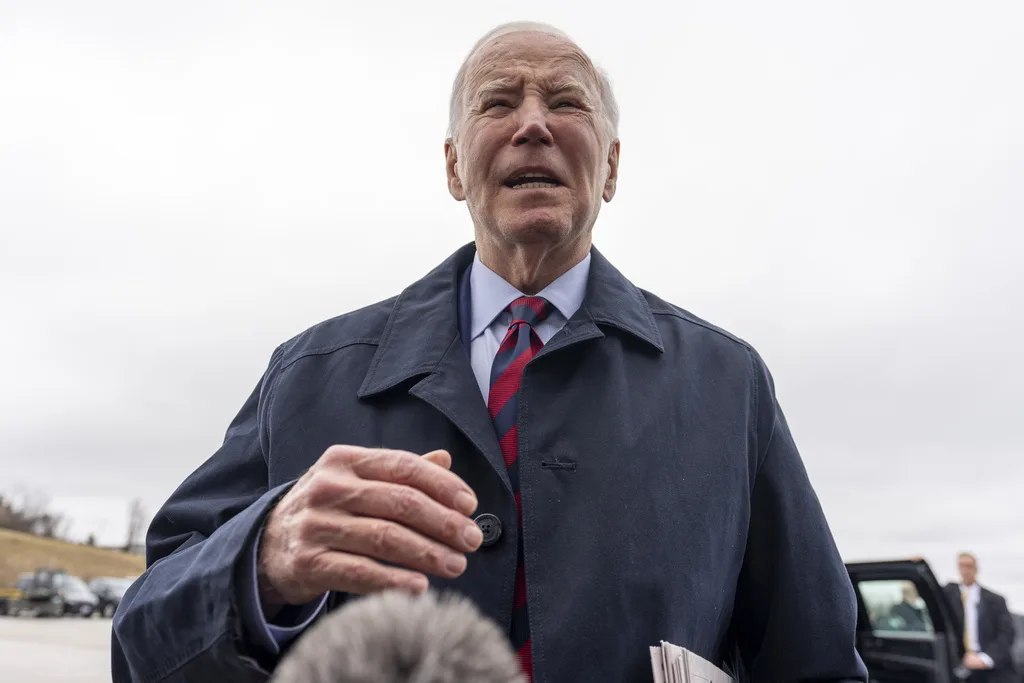
#image_title
#image_title
If successful in its pilot program, SpaceX’s Starlink internet could play an important role in expanding broadband access in rural Wisconsin, Evers says.
An innovative broadband expansion project that would utilize satellites and be the first of its kind in Wisconsin could boost high-speed internet access not only in Eau Claire County but, if successful, in other parts of the state, Gov. Tony Evers said during a stop in Eau Claire Thursday.
The Wisconsin Economic Development Corp. (WEDC) and county officials are launching a pilot program to test the SpaceX Starlink satellite program to provide high-speed internet to 50 homes and businesses in the county’s southeastern area, south of Augusta. The effort is paid for by a $27,500 WEDC grant and funding from three regional hospitals and other community partners.
There are other satellite internet providers in Wisconsin, but the Starlink system is unique in that it provides high-speed internet using low-orbit satellites, thereby reducing the time delay between sending and receiving data. Its backers hope it can provide that service more quickly and for a cheaper price than the traditional method of burying high-speed fiber underground.
“If we can utilize satellite technology [to provide high-speed internet], that will be a game changer for us,” Evers said, noting he’s hopeful the technology used by Starlink could be used to expand broadband access to other parts of Wisconsin lacking it. “It’s possible. It’s just too early to tell.”

How well the Starlink service will work remains uncertain, county officials acknowledged, noting it could be subject to properties’ access to satellites based on such factors as topography and weather. Access to the north will be key to accessing the services, as Starlink satellites being used for the project are to the north of the county.
“If a property has a big woods or something else that blocks their northern access, that could pose a problem,” said Donald Mowry, an Eau Claire County Board supervisor and chairman of a county broadband committee. “But we’re hoping this works.”
County officials will collect feedback from service users and have a waiting list of participants if the program doesn’t work for some, Mowry said.
Much of the state, especially rural regions, lack access to high-speed internet, a growing concern as education, businesses, health care, and other aspects of life increasingly necessitate that service. An estimated 400,000 households, most in rural areas, lack broadband access.
Without such access, Evers said, those locations struggle to make a go of it economically and to attract new residents and businesses and maintain current ones.
Evers’ proposed 2021-23 state budget includes almost $200 million for broadband expansion, including $150 million for growing broadband infrastructure in underserved areas and another $40 million to help low-income residents afford it. Another $200 million in federal American Rescue Plan funding would also be spent to boost high-speed internet during the next two years.
Republicans in the Legislature support spending $500 million during the next four years, with those dollars coming in the form of one-time federal funding.
Lack of broadband access is a top concern in Wisconsin and needs to be addressed sooner than later, said WEDC Secretary and CEO Missy Hughes. Doing so is necessary to assist schools, businesses, and health care providers operate more efficiently, she said.
RELATED: Report: One in Four Across Rural Wisconsin Still Lack Internet Speeds Needed for Today’s Economy
Hughes lives in Viroqua, in the western part of the state, and said much of that region lacks high-speed internet service.
“We see a lack of broadband in rural Wisconsin, and it’s really creating a challenge for economic development and moving rural Wisconsin forward,” Hughes said at Thursday’s press conference. “To have an innovation like this Starlink project come forward is really incredible.”
Broadband gaps across Wisconsin, especially in the state’s northern portion, have become especially noticeable during the coronavirus pandemic, said Chris Meyer, director of telehealth for Marshfield Clinic Health System and a member of Evers’ broadband task force. Increasing access is necessary to allow more people to access telehealth, he said, thereby reducing travel times to medical providers and increasing participation in healthcare visits.
“This can offer a more affordable way to reach people’s healthcare needs,” Meyer said, noting improved broadband could reduce some healthcare disparities made more evident during the pandemic.
Meyer said he doesn’t see the satellite service as a replacement for traditional fiber broadband service. But if it works in Eau Claire County, it could play an important role in growing the amount of high-speed internet available elsewhere across the state, he said, especially in areas where expanding high-speed fiber proves difficult.
“There are definitely a lot of gaps out there in our broadband system, and this satellite system is a way some of those holes can be filled,” he said.
Such expansion would benefit his business, said Ronald Perry, who owns Otter Creek Seed, Sales & Service in rural Osseo. He currently has two broadband routers to help operate his business, but they often operate at slow speed because of lacking broadband. Paying to boost internet speeds costs him about $1,000 monthly, he said.
“Especially with all the data we’re using, it slows down to half speed and then we’re fighting with that,” Perry said of his internet service. “I’m hoping this Starlink program can help bring decent broadband to our area.”
SpaceX’s Starlink currently is delivering high-speed internet in the US and internationally, and the company plans to continue to expand its service area. In Eau Claire County, funding from WEDC and others will pay the $499 equipment fee and the $99 monthly service cost for each participating household for one year.
WEDC and the governor’s office partnered earlier this year to expand broadband access when they joined with the state Public Service Commission on a $100,000 pilot project with the Northland Pines School District to test the use of tethered drones to provide Wi-Fi service for students.
Politics

Biden administration bans noncompete clauses for workers
The Federal Trade Commission (FTC) voted on Tuesday to ban noncompete agreements—those pesky clauses that employers often force their workers to...

Opinion: Trump, GOP fail January 6 truth test
In this op-ed, Milwaukee resident Terry Hansen reflects on the events that took place on January 6, the response from Trump and other GOP members,...
Local News

Readers Poll: Top Bowling Alleys in Wisconsin
Looking for the best bowling in Wisconsin? Look no further! Our readers have spoken in our recent poll, and we have the inside scoop on the top...

8 Wisconsin restaurants Top Chef judges are raving about
Top Chef’s 21st season is all about Wisconsin, and on-screen, it’s already apparent that the judges feel right at home here. But, while filming in...




